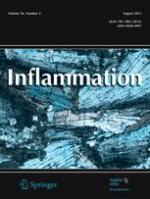Citation:
Ne'eman N, Sela MN, Chanes S, Bierkenfeld L, Kutani D, Lahav M, Ginsburg I. Effect of leukocyte hydrolases on bacteria. XIV. Bacteriolytic effects of human sera, synovial fluids, and purulent exudates on Staphylococcus aureus and Streptococcus faecalis: modulation by Cohn's fraction II and by polyelectrolytes. Inflammation. 1979;3 (4) :379-394.

Abstract:
Normal sera and plasma, derived from humans, calves, rats, rabbits, horses, human synovial fluids, inflammatory exudates, and leukocyte extracts, when sufficiently diluted are highly bacteriolytic for Staph, aureus, Strep. faecalis, B. sutilis and to a variety of gram-negative rods. On the other hand, concentrated serum or the other body fluids are usually not bacteriolytic for these bacterial species. While the lysis of Staph, aureus and B. subtilis by diluted serum is not lysozyme dependent, lysis of Strep. faecalis is absolutely dependent on the concentration of lysozyme. The lytic factor in human serum is present in Cohn's fractions III, IV, and V. It is nondialyzable, resistant to heating for 75 degrees C and 20 min, and acts optimally at pH 5.0. Like leukocyte extracts, synovial fluids, and inflammatory exudates, it lyses only young staphylococci. The inability of concentrated serum to lyse Staph. aureus and Strep. faecalis is due to the presence in the gamma globulin fraction of a potent inhibitor, which can be partly removed by dilution of by adsorption upon the homologous bacteria. Lysis of the bacteria is also strongly inhibited by Cohn's fraction II (gamma globulin) by high-molecular-weight DNA, heparin, liquoid, and histone. The possible role played by serum globulin in the protection of bacteria against degradation by leukocyte is discussed.Publication Global ID: http://www.ncbi.nlm.nih.gov/pubmed/92458

